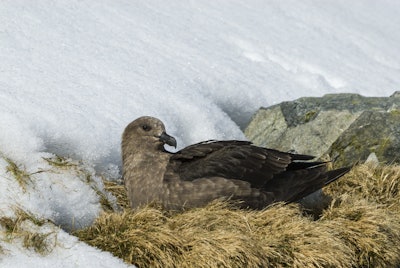
The first-ever detection of the highly pathogenic avian influenza (HPAI) virus has been confirmed on the Antarctic mainland.
Samples from wild seabirds found dead near a research station operated by Argentina tested positive for HPAI, reports Spain’s Ministry of Science, Innovation and Universities. The presence of the virus in two skuas was confirmed by Spanish scientists earlier this week.
Tests showed that the birds were infected with the H5 serotype of the virus, and one of them was carrying a virus that is classified as highly pathogenic.
Following the discovery, national polar programs are putting in place measures to ensure that the virus is not transmitted to humans, nor spread by people to other locations.
According to the ministry, the finding is significant as it shows the ability of the virus to spread to Antarctica despite its distance from other continents. However, it adds, the detection may explain elevated mortality in wild birds in the area during the Antarctic summer. The cause of their death could not be identified.
Presence of HPAI virus confirmed in South Atlantic
Although never previously detected on the Antarctic mainland before, presence of the HPAI virus has been confirmed in wild animals in the nearby South Atlantic area in recent months.
In early October of last year, the first wild birds infected with the H5N1 HPAI virus serotype were identified in South Georgia and the South Sandwich Islands.
Over the following month, 22 cases were officially recorded in wild birds at five locations in this British Overseas Territory. Affected were kelp gulls and brown skuas, according to notifications to the World Organisation for Animal Health. No further cases in wild birds have been reported since that time.
However, presence of HPAI virus was detected in seals found dead in South Georgia in January of this year.
That was the first time that mammals had been found infected with HPAI in the sub-Antarctic, according to the Animal and Plant Health Agency (APHA), an agency of the United Kingdom government.
Testing positive for the virus were elephant seals and fur seals, and Atlantic terns, as well as the gulls and skuas.
The territory is geographically isolated and can only be reached by ship, so transmission of the virus by human means is unlikely. Sequence analysis from infected birds point to the introduction of the virus through wild birds migrating from South America, reported the APHA.
View our continuing coverage of the global avian influenza situation.

















